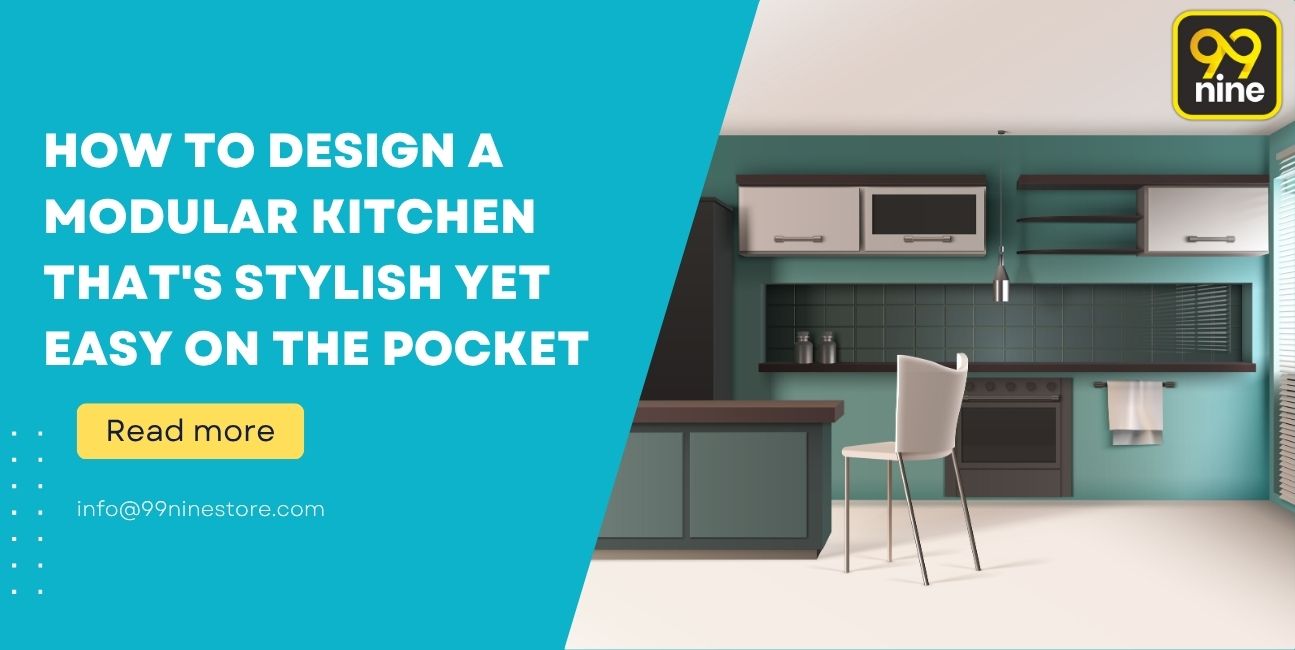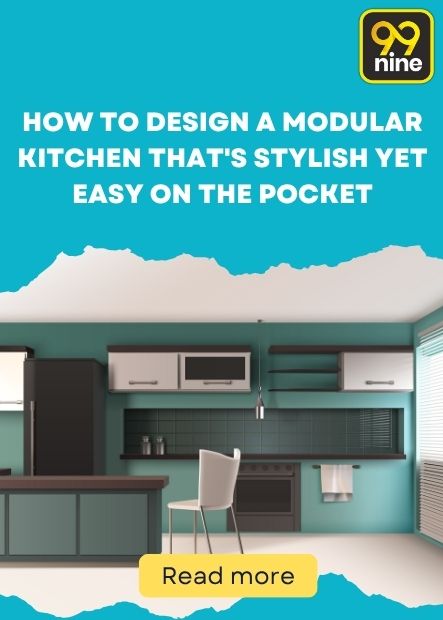

How to Design a Modular Kitchen That's Stylish Yet Easy on the Pocket
Look, I’ll be honest with you. When my sister told me she wanted a “magazine-worthy” kitchen on a ₹1.2 lakh budget, I laughed. Not because it was impossible—I’d seen it done dozens of times—but because she’d been watching too many home makeover shows where budgets seem infinite and timelines don’t exist.
Three months later? Her kitchen genuinely looks like it cost twice what she paid. And no, there’s no magic trick involved. Just smart decisions, a bit of patience, and knowing exactly where to spend and where to save.
Here’s everything I’ve learned about creating a budget-friendly modular kitchen that doesn’t look, well, budget. After spending twenty-plus years in this industry, I’ve picked up a few things about making rupees stretch without making compromises that’ll haunt you later.
The Truth About Modular Kitchen Design Nobody Tells You
So everyone thinks “modular” automatically means expensive. I get it. Walk into any showroom and the first thing they show you has a price tag that makes your eye twitch.
But here’s what changed the game for me: Modular Kitchen Design isn’t actually about luxury. It’s about efficiency. Those factories churning out standardized units? They’re saving YOU money because they’re not experimenting on your dime. Traditional carpenters charge by the day—and trust me, some of them can stretch a simple cabinet job into a week-long saga.
Factory-made modules arrive tested, checked, and ready. You know that satisfying feeling when IKEA furniture actually looks like the picture? Same energy. Except you’re getting something built for Indian cooking—not Swedish minimalism.
Let’s Talk Money (Because Everyone’s Thinking It)
Right. So what does a decent modular kitchen actually cost? Brace yourself: ₹80,000 to ₹2,50,000 for most homes. The sweet spot? Around ₹1,50,000 for a standard 8×10 feet space.
Now here’s my allocation trick (stolen from an architect friend who clearly knows her stuff):
- 40% on cabinets
- 25% on countertops
- 20% on appliances
- 15% on hardware and the little things
Why does this work? Because it stops you from doing what my neighbor did—spending ₹80,000 on gorgeous high-gloss shutters and then realizing she couldn’t afford a decent chimney. Her beautiful cabinets? Covered in grease within six months.
That Bangalore client I mentioned? She followed this split religiously with her ₹1,20,000 budget. Three years later, her kitchen still functions perfectly. The hinges haven’t loosened. The countertop hasn’t cracked. That’s what proper allocation does—it buys you peace of mind.
Picking Your Layout (This Actually Matters More Than Color)
Can we talk about how everyone obsesses over cabinet colors before figuring out if they can actually MOVE in their kitchen? I’ve seen too many people copy some Instagram-famous kitchen layout that makes zero sense for their actual space.
Your Modular Kitchen Design layout isn’t about trends. It’s about whether you’ll curse every time you cook.
- L-Shaped: Perfect for those 8×8 to 10×10 feet kitchens most of us are working with. Two walls, nice open center, and you’re not buying a million cabinets. I recommend this for 60% of my clients because it just… works. Plus, it’s one of the most affordable modular kitchen ideas that doesn’t feel like a compromise.
- U-Shaped: Got space and multiple cooks? This is your answer. Yeah, more cabinets means more money, but the workflow is chef-level good. Pro tip from the trenches: make one side open shelves. Cuts cost, looks intentional, gives you easy access to everyday dishes.
- Parallel (Galley): My absolute favorite for narrow spaces. Minimum 4 feet wide, two facing counters, and boom—you’ve got an efficient cooking machine. Best part? Straight cabinet runs cost less than those tricky corner units with their fancy hardware.
- Single-Wall: Studio apartment? Tiny home? This is your friend. Everything on one wall, minimal materials, maximum savings. It’s the ultimate budget-friendly modular kitchen for space-challenged folks.
Materials: Where You’ll Either Save or Sink Your Budget
Okay, this is where things get interesting. And by interesting, I mean this is where smart choices save you literally tens of thousands.
The Box Nobody Sees (But Everyone Needs)
Your cabinet carcass—the actual box structure—doesn’t need to win beauty contests. It needs to not fall apart.
BWR plywood costs more but laughs at humidity. Mumbai monsoons? Bangalore dampness? BWR doesn’t care. But here’s the insider move: use BWR only for base cabinets near water. Upper cabinets? MDF works fine and costs way less.
I just saved you 20-30% right there. You’re welcome.
Shutters: Where Everyone Loses Their Mind
High-gloss acrylic looks incredible. No argument there. It also costs ₹1,200-2,000 per square foot and laughs at your budget.
Laminates start at ₹400 per square foot. “But don’t they look cheap?” Not anymore. I’ve seen laminate finishes so good I had to literally touch them to confirm they weren’t acrylic. Clients choose laminates, save ₹40,000-60,000, and put that money into better appliances or granite instead of synthetic countertops.
Two years down the line? Nobody regrets it. That’s the test, right? What makes you happy long-term, not just on installation day.
Countertops: Playing the Long Game
Granite. Just… granite. ₹150-400 per square foot for standard colors, handles heat like a champion, available everywhere. Is quartz prettier? Sure. Is it worth 2-3x the cost? Depends on how much you value pattern uniformity versus saving ₹30,000.
Want to know my sneaky trick? Granite for prep areas, laminate for the breakfast counter extension. Same visual flow, huge cost difference. That’s what I call a stylish modular kitchen on a budget move.
Storage: The Part That Actually Changes Your Life
Standard shelves are fine. They’re also mildly infuriating when you’re digging around for that one pot at the back.
Pull-out drawers (₹2,000-4,000 each) are worth it for base cabinets you use daily. This isn’t luxury—this is back-saving, time-saving functionality.
Corner cabinets with magic corners or carousels? They seem pricey at ₹8,000-15,000. Then you realize you’ve doubled your usable corner space. Suddenly those rotating shelves feel like genius.
Floor-to-ceiling cabinets cost a bit more initially. But they eliminate that dust-collecting gap, give you 30% more storage, and mean you’re not buying additional storage units later. Math that works in your favor.
Skip soft-close on every single door (pick your top 5 cabinets), skip motorized gimmicks, and definitely skip imported organizers when Indian versions do the exact same job for half the price. These modular kitchen design tips alone can save you ₹15,000-25,000.
Colors That Won’t Make You Cringe in Three Years
Free design tip: light colors make spaces feel bigger and hide less dirt than you’d think. Whites, creams, soft grays—they reflect light and create airiness.
But go two-tone if you want interest without cost. Dark base cabinets (hide stains), light upper cabinets (feel spacious). This combo shows up in modern modular kitchen designs everywhere because it actually works.
Handleless cabinets with push-open systems? Cool for about five minutes until you realize you’ve added ₹200-300 per shutter. Simple aluminum handles cost ₹50-150 and come in hundreds of contemporary designs. Which makes more sense for small modular kitchen design planning?
Appliances: The Reality Check Nobody Wants
Built-in everything looks seamless and costs 40-60% more than regular appliances. Unless you’re furnishing a luxury condo, freestanding gives you better value.
Here’s my appliance hierarchy for a budget-friendly modular kitchen:
- Invest in: Good chimney (₹8,000-15,000). Non-negotiable. Indian cooking produces serious fumes. Cheap chimneys fail fast, and oil damage to cabinets is permanent and ugly.
- Go mid-range: Hobs (₹4,000-8,000). Premium burners rarely offer enough extra benefit to justify the cost jump.
- Skip or delay: Built-in ovens unless you’re a serious baker. A countertop convection microwave (₹6,000-12,000) handles 90% of baking needs and doesn’t lock you into a specific cabinet configuration.
This appliance strategy is fundamental to modular kitchen interior ideas that balance ambition with budget reality.
Lighting: Cheapest Upgrade With the Biggest Impact
I’m going to shout this because people keep ignoring it: LIGHTING MAKES OR BREAKS YOUR KITCHEN.
And it’s weirdly affordable. Every professional working on Modular Kitchen Design projects knows good lighting transforms everything.
LED strips under wall cabinets (₹200-400 per foot) eliminate shadows on your cutting board. Focused ceiling lights (₹1,000-2,000 each) over stove and sink improve both safety and ambiance.
Warm white LEDs (2700-3000K) feel cozy. Cool white (4000-5000K) shows true colors—helpful for cooking. Mix both. Your kitchen will photograph beautifully and function even better.
Adding Personality Without Adding Zeroes
Open shelving on one section costs basically nothing and makes your pretty dishes actually visible. Peel-and-stick backsplash tiles (₹50-200 per square foot) come in gorgeous patterns and install in hours, not days.
Magnetic knife strips, hanging pot racks, tension rod dividers inside cabinets—we’re talking ₹500-2,000 per item. Small investments that make cooking genuinely more pleasant. Perfect examples of affordable modular kitchen ideas that add character without drama.
Real Talk: The 99nine Store Discovery
So I was consulting with this young couple—first home, tight budget, big dreams. They’d been to every furniture store in the city and kept hitting the same wall: either affordable and ugly, or beautiful and unaffordable.
Then they discovered 99nine Store. And honestly? Game-changer for them.
They started with the basics—quality drawer organizers, decent cookware, proper storage containers. All the stuff that makes a Modular Kitchen Design actually functional day-to-day. The kind of products that cost ₹2,000 at fancy stores but were available for a fraction of that.
What impressed me was their strategy: nail the permanent structure first (cabinets, countertops), then gradually add organization and tools as budget allows. 99nine Store’s range let them do exactly that—products starting at just ₹29 meant they could equip their entire kitchen without panic.
Six months later, their kitchen runs smoothly because they prioritized the right things. That’s cost-effective kitchen renovation that actually sticks.
The Costs Everyone Forgets (Until the Bill Arrives)
Let’s talk about what actually ruins budgets—the stuff nobody mentions until you’re committed:
- Installation: Add 10-15% of your material cost
- Electrical work: ₹5,000-15,000 (you’ll want more points than you think)
- Plumbing changes: ₹3,000-8,000
- Removing your old kitchen: ₹2,000-5,000
- Transportation: ₹2,000-4,000 (often “forgotten” in quotes)
- Design consultation: ₹3,000-10,000 (worth every rupee, seriously)
Then add 10% for surprises. Because there are always surprises in Modular Kitchen Design projects. That wall isn’t as straight as it looked. That pipe is in a weird place. That electrical point doesn’t work.
Better to budget for reality than get nasty surprises.
Join the Community: Follow us on social media to stay updated on exclusive deals, new arrivals, and tips for better living!
Negotiation: Yes, You Can (And Should)
Here’s what works: get three identical quotes. Present them to each vendor. Watch prices magically drop.
Ask about festival sales, year-end clearances, display model discounts. Bundle your appliances with the kitchen order—vendors often reduce prices for complete packages.
One simple line: “Is this your best price?” Even asked politely, it often yields 5-10% reduction. Never, and I mean NEVER, accept the first quote without question. That’s just leaving money on the table.
These negotiation tactics are essential modular kitchen design tips that can save you serious cash.
Timeline Reality Check
Modular Kitchen Design projects take 4-6 weeks typically. Manufacturing needs 2-3 weeks, installation takes 3-7 days depending on complexity.
What causes delays? Changing your mind after ordering (don’t do this), chosen hardware being out of stock (pick in-stock options), and installation team availability (book dates early).
Lock your design. Choose available materials. Schedule ahead. You’ll be fine.
Keeping Your Investment Looking Good
Even the best low-cost modular kitchen design needs basic care. Wipe oil spills immediately. Clean shutters weekly with a damp cloth—no harsh chemicals needed.
Tighten hardware every six months. Loose hinges stress the entire cabinet structure. Clean chimney filters monthly—clogged filters are inefficient and dangerous.
Good materials with simple maintenance outlast expensive materials with neglect. Every time.
A Real ₹1 Lakh Kitchen Breakdown
Let me show you actual numbers from a Pune project. 9×8 feet L-shaped kitchen:
- BWR plywood base cabinets, laminate finish: ₹45,000
- MDF upper cabinets, laminate finish: ₹22,000
- Granite countertop (standard color): ₹12,000
- Stainless steel sink and faucet: ₹6,000
- Hardware and handles: ₹4,000
- Installation and electrical: ₹8,000
- Lighting and accessories: ₹3,000
Total: ₹1,00,000
Eighteen months later? Still looks great, functions perfectly, zero regrets. That’s what smart Modular Kitchen Design delivers—value that lasts.
Mistakes I’ve Seen Too Many Times
- Stop choosing style over function. That tall oven tower looks amazing until you need a stepladder to reach the top shelf.
- Don’t cheap out on hardware. ₹2,000 saved on hinges means ₹10,000 spent on replacements within a year. Quality hardware is non-negotiable.
- Respect the work triangle. Sink, stove, fridge should form a triangle with 4-9 feet sides. Anything else and you’ll walk unnecessary miles every day. Critical for small modular kitchen design.
- Plan electrical properly. Add twice as many points as you think you need. Adding them later costs triple.
- Ignore trends that don’t fit your life. Open shelving looks Instagram-perfect until you realize Indian cooking means weekly deep-cleaning of every exposed surface. Choose what works for YOUR cooking style, not someone else’s aesthetic.
Why This All Matters Beyond Today
Sustainable, locally-sourced materials often cost less AND reduce environmental impact. Win-win.
Plus, real estate agents consistently report that modern modular kitchen designs boost home resale value by 70-80%. Even a budget-friendly modular kitchen executed well becomes a major selling point.
You’re not just building a kitchen. You’re making an investment that pays back.
Here’s What You Actually Do Next
Ready? Start here:
- Measure everything accurately (length, width, height—don’t guess)
- Set a realistic budget using the 40-25-20-15 split
- Collect inspiration images (but focus on layouts, not just pretty colors)
- Get three detailed quotes from reputable vendors
- Visit showrooms and touch materials—pictures lie, your hands don’t
Whether it’s your first kitchen or a renovation, remember: the best Modular Kitchen Design makes your life easier without emptying your bank account.
Your Kitchen Is Waiting
The perfect kitchen isn’t about unlimited budgets. It’s about smart choices, proper planning, and knowing exactly where your rupees should go.
Need quality kitchen essentials and organization solutions to complete your setup? Check out 99nine Store—where affordability actually means something. From storage containers to cookware, find everything you need with products starting at just ₹29.
Your dream kitchen is completely achievable. Now you know exactly how to make it happen.
FAQ
FAQs About 99nine Store
A decent modular kitchen for a standard 8x10 feet space typically costs between ₹80,000 to ₹2,50,000. The sweet spot for a fully functional and stylish kitchen is around ₹1,50,000. The key is to follow a smart allocation: 40% on cabinets, 25% on countertops, 20% on appliances, and 15% on hardware and incidentals to ensure no single aspect blows your budget.
Do not compromise on two key areas: quality hardware and a good chimney. Cheap hinges and drawer slides will wear out quickly, leading to costly repairs. A poor-quality chimney won't effectively remove grease and fumes, which can cause permanent, ugly damage to your cabinets and walls. These are investments that protect the rest of your kitchen.
For cabinets, use laminates for the shutters (doors) as they offer a wide variety of modern designs at a fraction of the cost of acrylic. For the cabinet box (carcass), use BWR plywood for base cabinets (especially near water) and more affordable MDF for upper cabinets. For countertops, standard-grade granite is the most durable and budget-friendly option, far outperforming synthetic stones in terms of heat resistance and cost.
For small kitchens, an L-shaped layout is often the most efficient and affordable. It utilizes two walls, provides a good work triangle, and avoids the expensive corner units and hardware required for a U-shaped kitchen. For very narrow spaces, a parallel (galley) layout is also a highly efficient and cost-effective choice.
- Go Two-Tone: Use different colored laminates for your upper and base cabinets (e.g., light uppers, dark bases) for a custom, designer look.
- Strategic Open Shelving: Replace a few upper cabinets with open shelves to display nice dishes and create an airy feel.
- Affordable Backsplash: Use peel-and-stick tile decals for a stylish backsplash that is easy to install and change.
- Focus on Lighting: Install under-cabinet LED strips and focused ceiling lights to dramatically improve the ambiance and functionality without a high cost.






